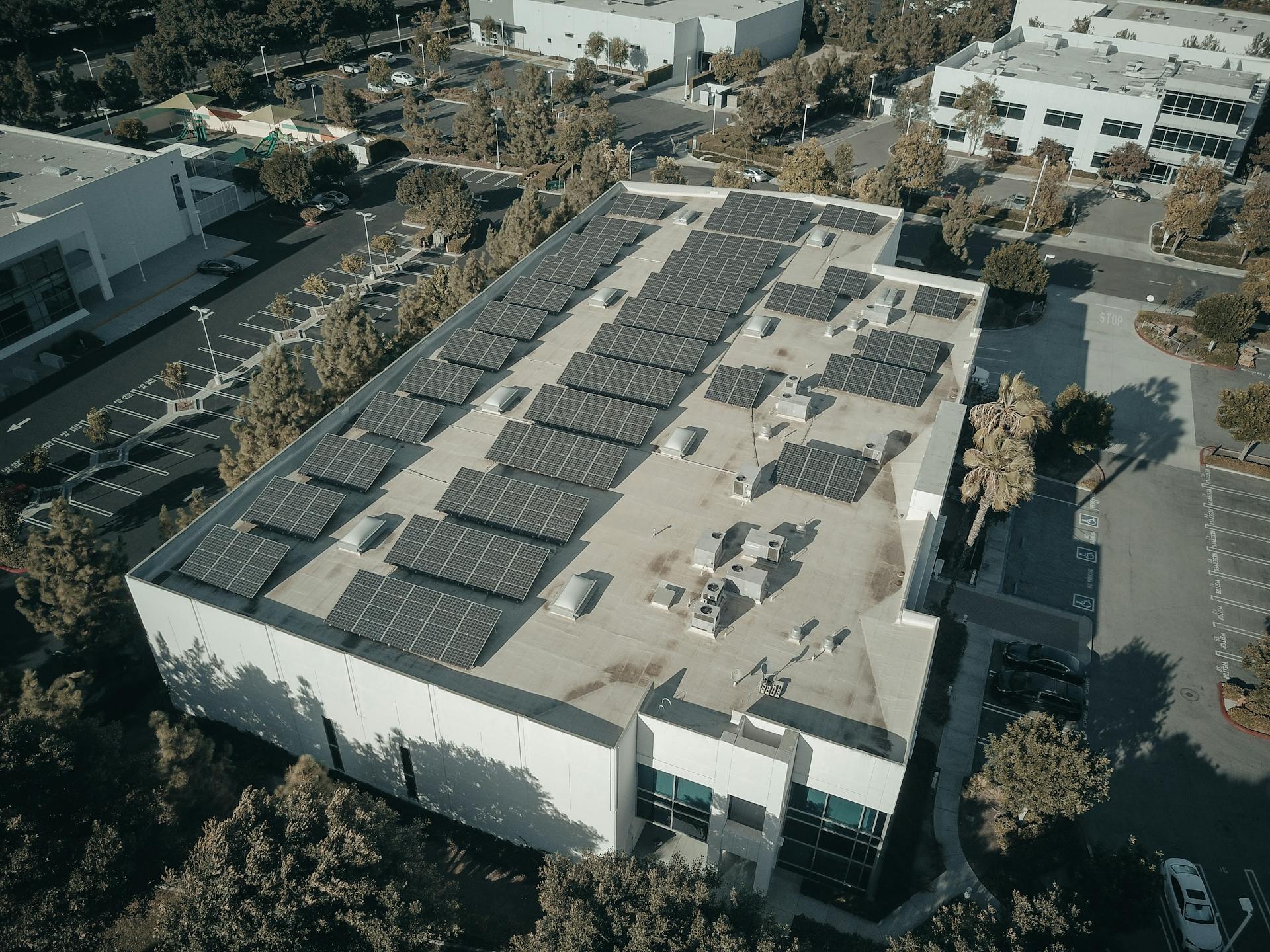
Flipping commercial property can be a lucrative venture, but it's not for the faint of heart. It requires a significant amount of capital, expertise, and risk tolerance.
To begin, you'll need to secure a loan or financing for the property, which can be challenging due to the high demand for commercial property loans. The average loan-to-value ratio for commercial property loans is around 70-80%.
You'll also need to have a solid understanding of the local market, including current trends, rental rates, and vacancy rates. A good starting point is to research the top commercial property markets in the US, such as New York City and Los Angeles.
A successful commercial property flip typically involves purchasing a property at a discount, renovating it, and selling it for a profit. The average renovation cost for a commercial property can range from $100 to $500 per square foot.
Finding and Evaluating Properties
Finding the right properties is crucial to flipping commercial real estate successfully. Class B properties, which are in good condition but may need light repairs or modernization, are the best fit for flippers.
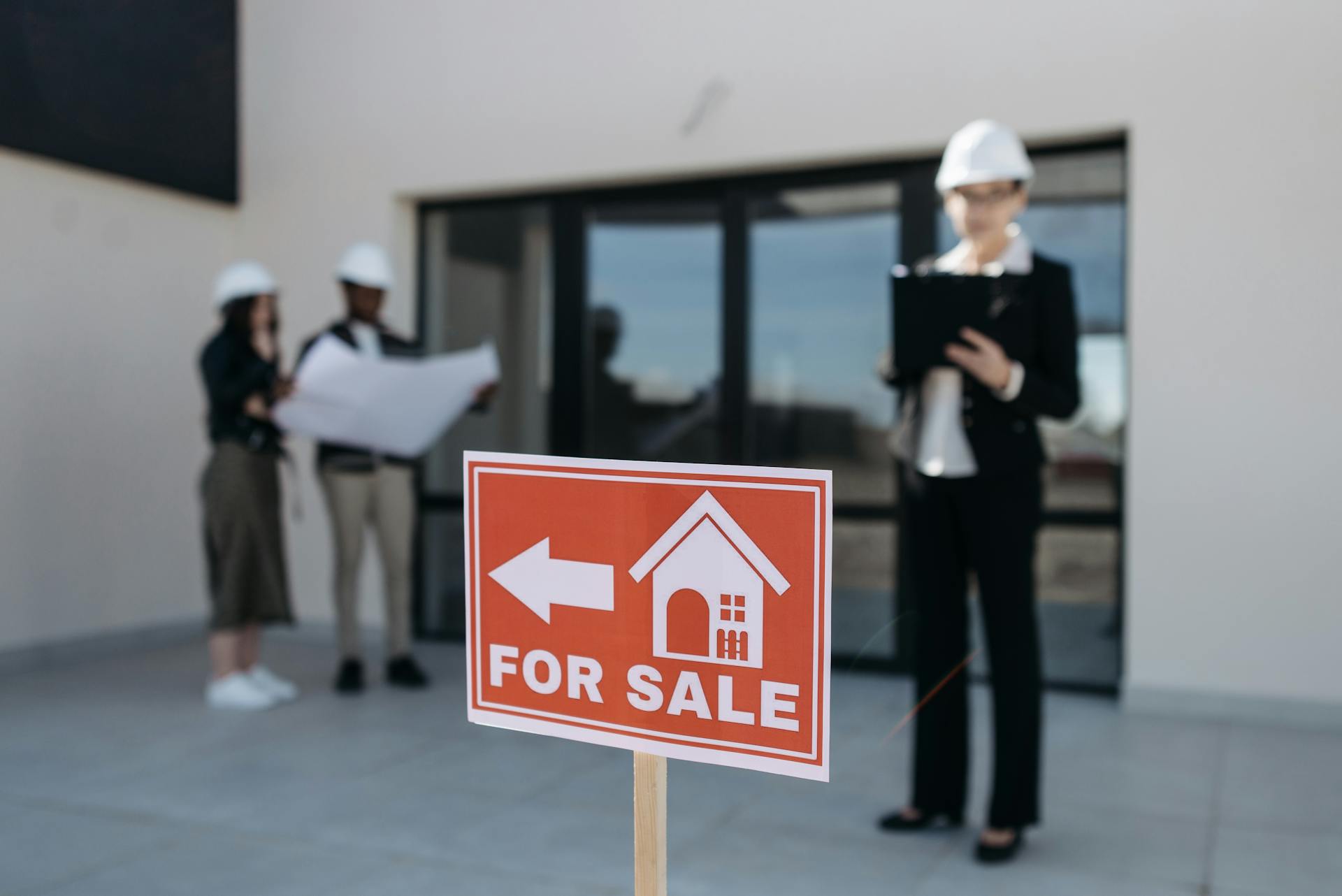
You should aim for Class B properties in your preferred states, whether office buildings, retail stores, hospitality buildings, industrial units, or multifamily properties. Talking to a real estate agent or carrying out independent research will help you find the right properties.
To evaluate properties, understand commercial property types, such as office, industrial, retail, and mixed-use properties, and their different needs. For example, attractive office properties are centrally located with plenty of parking, while industrial buildings should be sited near major roads and/or rail terminals and have large, well-maintained loading docks.
Finding Properties
Theodore Roosevelt once said, "Every person who invests in well-selected real estate in a growing section of a prosperous community adopts the surest and safest method of becoming independent, for real estate is the basis of wealth." Location and quality of real estate are key factors to consider.
Real estate players categorize properties into three classes: Class A, Class B, and Class C. Class A properties are high-end and high-quality, while Class C properties are typically in less desirable locations and/or considered low quality.
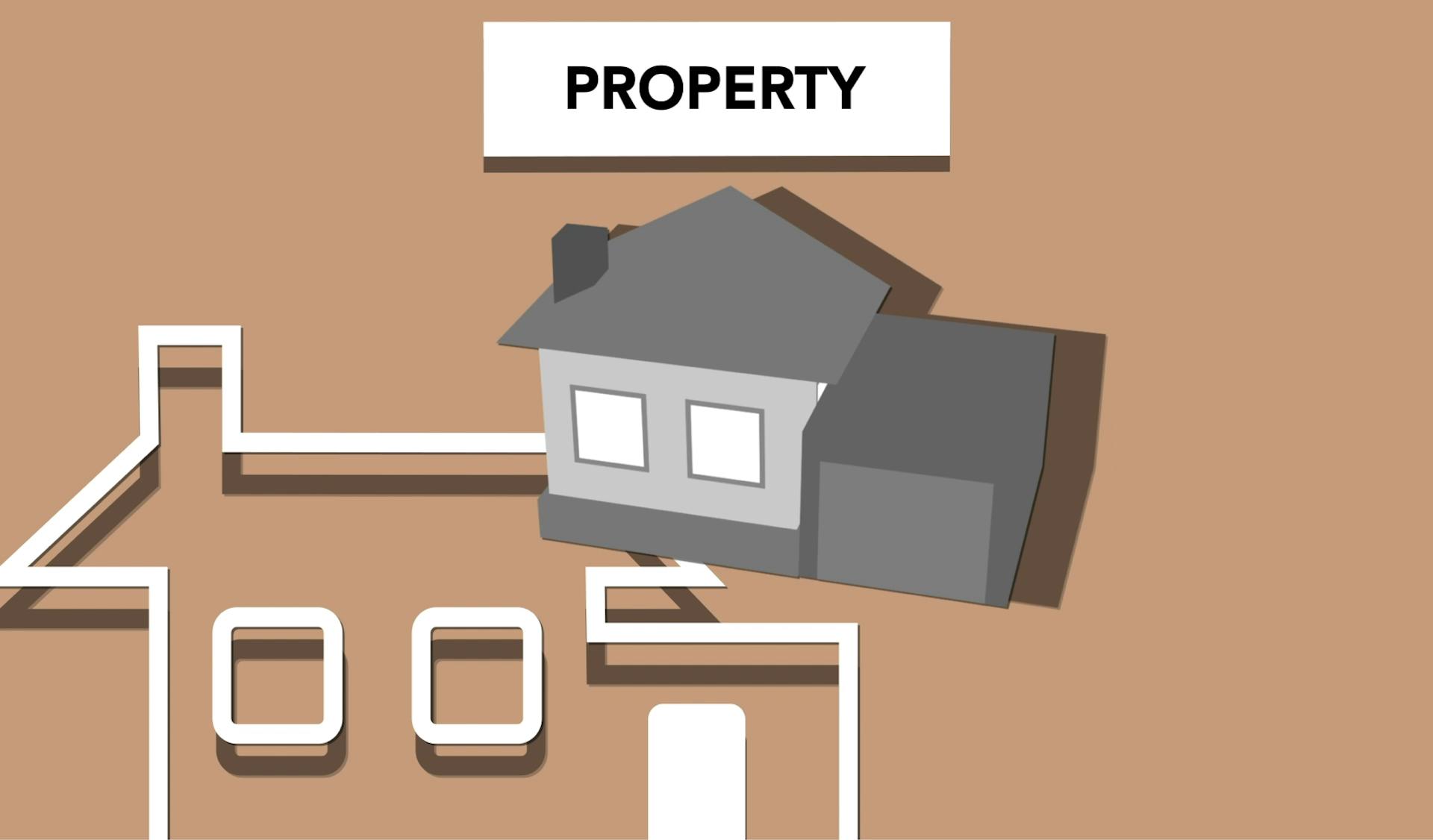
Class B properties are in good condition but may need light repairs or modernization. They are located in good markets and have the potential to be improved and sold for a profit. As a commercial real estate flipper, you should aim for Class B properties.
You can find Class B properties by talking to a real estate agent or carrying out independent research. Before investing, do the necessary due diligence to ensure there are no legal troubles and thoroughly check the property for any issues that need fixing.
Here are some key factors to consider when evaluating a property:
- Location: Look for properties in good markets with low vacancies and limited space for new development.
- Quality: Class B properties are a good fit for flippers, as they are in good condition but may need light repairs or modernization.
- Due diligence: Thoroughly check the property for any issues that need fixing and ensure there are no legal troubles.
By considering these factors, you can increase your chances of finding a profitable property to flip.
Understand Property Types
Commercial real estate is a broad term that encompasses various property types, each with its unique characteristics. Offices are ideal for central locations with plenty of parking available.
Industrial properties should be situated near major roads and/or rail terminals. They also require large, well-maintained loading docks.
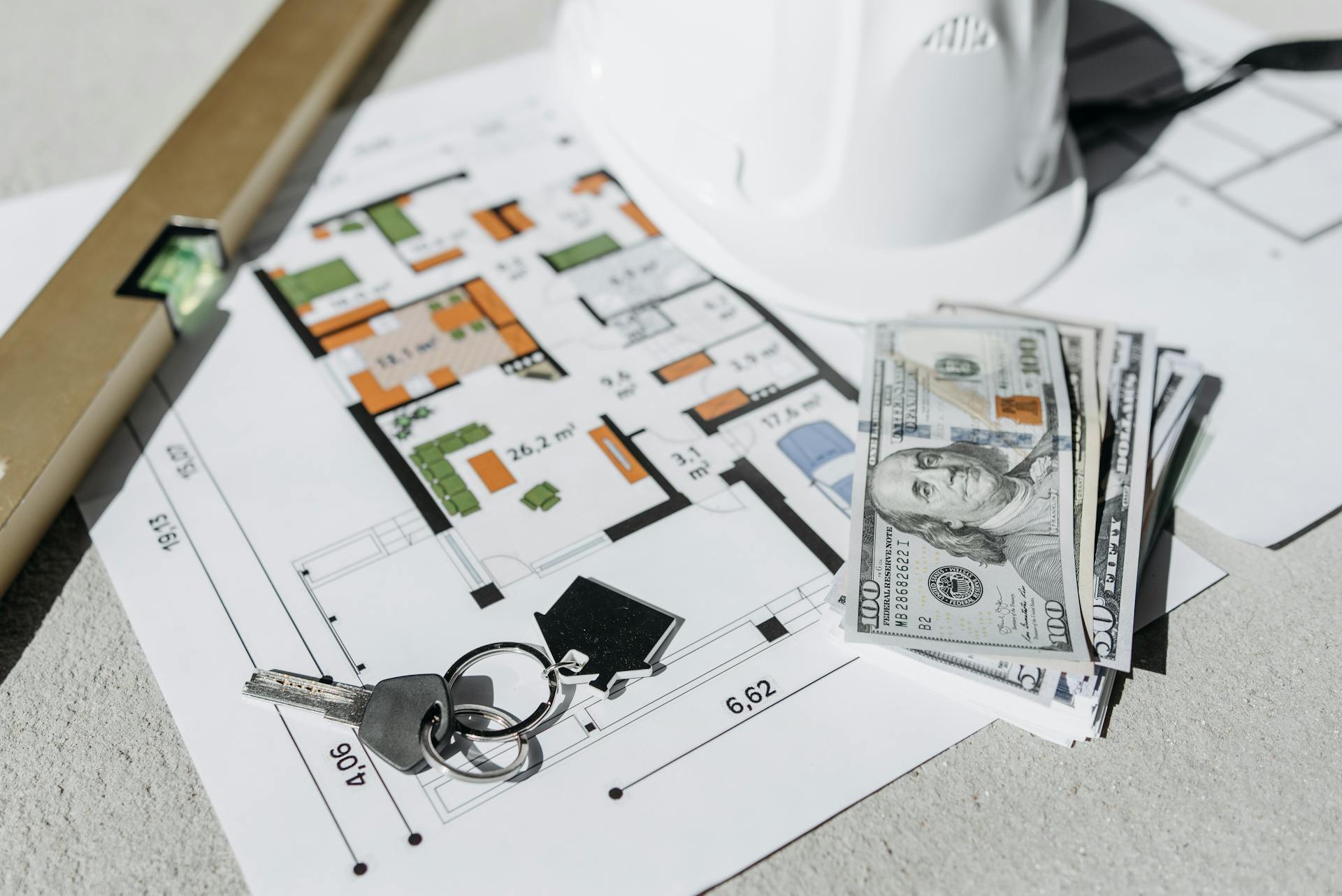
Retail properties need good visibility, easy parking, and plenty of foot traffic to attract customers. Mixed-use properties combine different types of properties, such as residential and commercial spaces, under one roof.
Areas with low vacancy rates and limited space for new development support rising values and high rental rates. This makes them ideal for flipping commercial real estate.
Understand Property Values
Understanding property values is crucial when searching for a commercial property to invest in. Commercial properties are valued using multiple approaches, with a heavy weight on their cap rates, gross rent multipliers, and cash-on-cash returns.
To determine the after-repair value of a commercial property, consider the market value of comparable properties that have the same quality as what the property will be after renovation. This means looking at Class A properties that are currently on the market.
Working with appraisers, realtors, or other market experts can help you get an accurate after-repair value. If you're doing it on your own, be conservative rather than over-optimistic when deciding on this value.
You might enjoy: Flipping Houses Capital Gains

It's also a good idea to consider different scenarios, such as a base case, best case, and worst case, to reflect the uncertainty of your valuation. This can help you prepare for different outcomes.
Cap rates are determined by dividing the property price by its annual net operating income, and they can tell you how high your returns will be on a debt-free purchase. Cap rates tend to be higher if the property is deemed riskier.
A gross rent multiplier is calculated by dividing the sale price of the property by its gross rental income, and it can help you determine the number of years necessary for the property to pay for itself.
#1: Conduct Market Research
Conducting market research is crucial before diving into the commercial real estate market. This involves analyzing key factors such as property values, vacancy rates, rental demand, and economic indicators.
Areas with low vacancies and limited space for new development have better chances of higher values, rental rates, and profit. This is because commercial real estate is scarce in these areas.
Readers also liked: How to Finance Multiple Rental Properties

Understanding the local real estate market dynamics is essential. For instance, if you're looking to flip properties in Houston, Texas, you need to understand the specific market conditions.
Before purchasing a property, do a market survey to determine if there will be demand for the improved property and at what price. This will help you identify potential properties that have the potential for significant appreciation.
You can conduct market research with the help of an agent who is familiar with the market or use reliable platforms like nestfully.com for fresh information.
Residential vs Estate
Residential vs Commercial Real Estate can be a significant consideration when evaluating properties.
Residential properties tend to have lower purchase prices compared to commercial properties.
You'll often find that residential properties have shorter holding periods, which can be beneficial for flippers who want to quickly sell their renovated properties.
Commercial properties, on the other hand, require larger capital investments due to their higher purchase prices.

The negotiation process for commercial properties can be more complex, involving multiple stakeholders and contracts.
Residential properties typically require less capital investment, making them more accessible to flippers with smaller budgets.
Flippers should be prepared for longer holding periods when dealing with commercial properties, which can be a challenge for those who need to generate cash flow quickly.
Financing and Budgeting
Creating a budget and timeline is crucial for a successful commercial property flip. Estimate the costs of renovations, improvements, and other expenses associated with the project.
Developing a realistic timeline will help you stay on track and ensure that the property is ready for sale within a reasonable timeframe.
If this caught your attention, see: Time Frame for 1031 Exchange
Repair and Renovation
Repair and renovation is a crucial step in flipping commercial property. The goal is to make improvements that increase the property's value, not just cosmetic changes.
To determine which repairs to focus on, consider what will improve the rental or lease income and reduce operating costs. This will increase the property's net operating income, which is essential for a buy-and-hold investor.
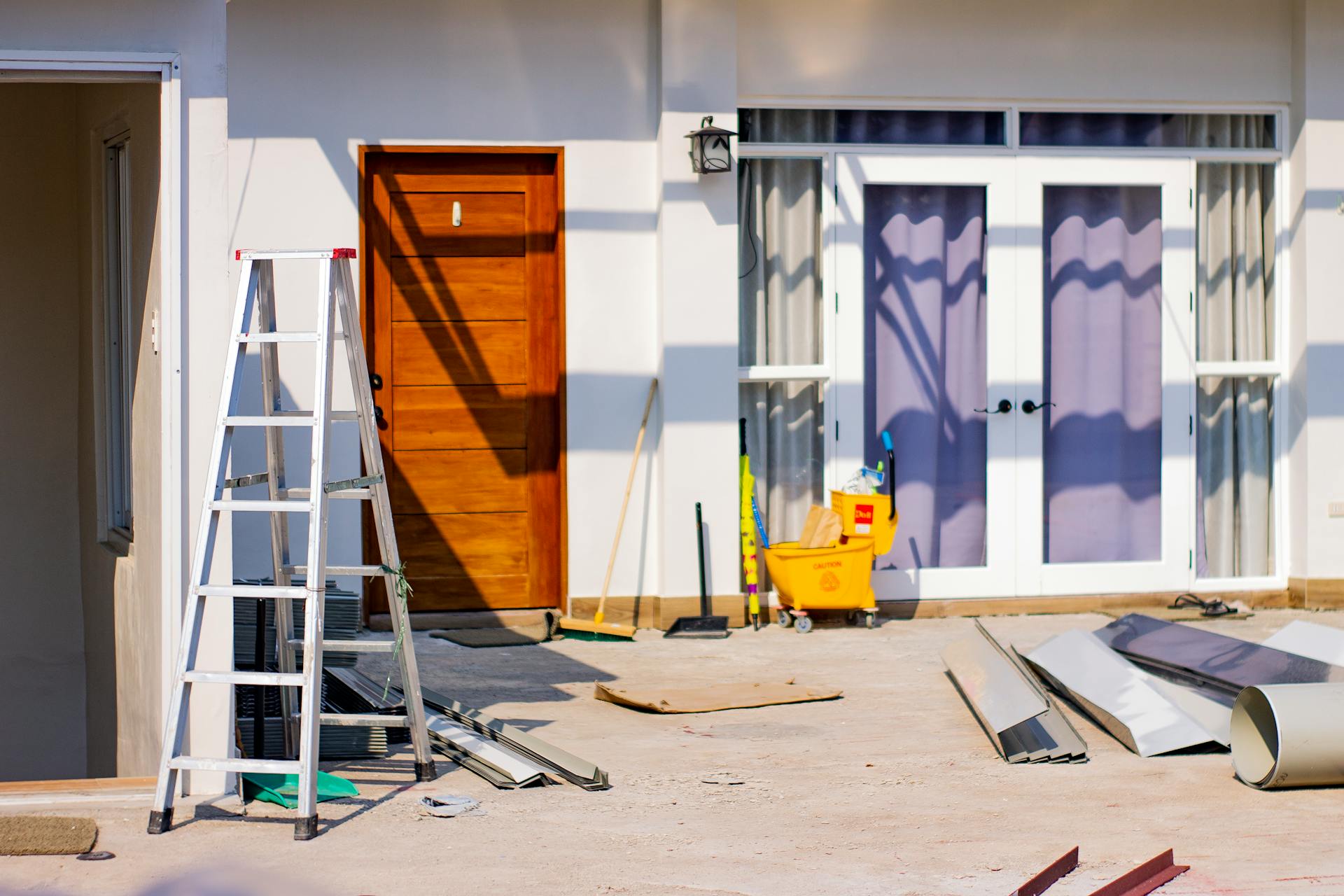
Commercial renovation costs can range from $30 to $450 per square foot, depending on the building type and location. It's essential to get multiple bids and choose the best value for money.
A good approach is to compare the property with similar ones in the area to identify the necessary repairs and renovations. This will help you determine the after-repair value of the property.
Be conservative when estimating the costs and consider a 20% contingency buffer or margin of safety. This will ensure you have enough funds to cover any unexpected expenses.
The after-repair value of a commercial property is the worth of the property after all necessary repairs and renovations have been completed. It's essential to work with appraisers, realtors, or other market experts to get an accurate figure.
After-Repair Value
The after-repair value of a commercial property is the worth of the property after all necessary repairs and renovations have been completed.

It's essential to obtain this value by considering the market value of comparable properties that already have the same quality as what this property will be after the renovation.
You can check online for properties on sale in your state (or that particular area) that are truly comparable, most likely Class A properties.
Working with appraisers, realtors, or other market experts can help you get an accurate figure.
It's better to be conservative than over-optimistic when deciding on the after-repair value.
You can come up with a base case, best case, and worst case scenarios to reflect the uncertainty of your valuation.
This will give you a clear picture of the property's potential value and help you make informed decisions.
#5: Focus on Renos and Improvements
To maximize the value of your commercial property, focus on making strategic renovations and improvements. This means hiring qualified contractors experienced in commercial property renovations.
Enhance the property's curb appeal, which can be achieved by renovating the exterior of the property. According to Invoice Owl, commercial renovation costs per square foot range from $30 to $450 depending on the building type and location.
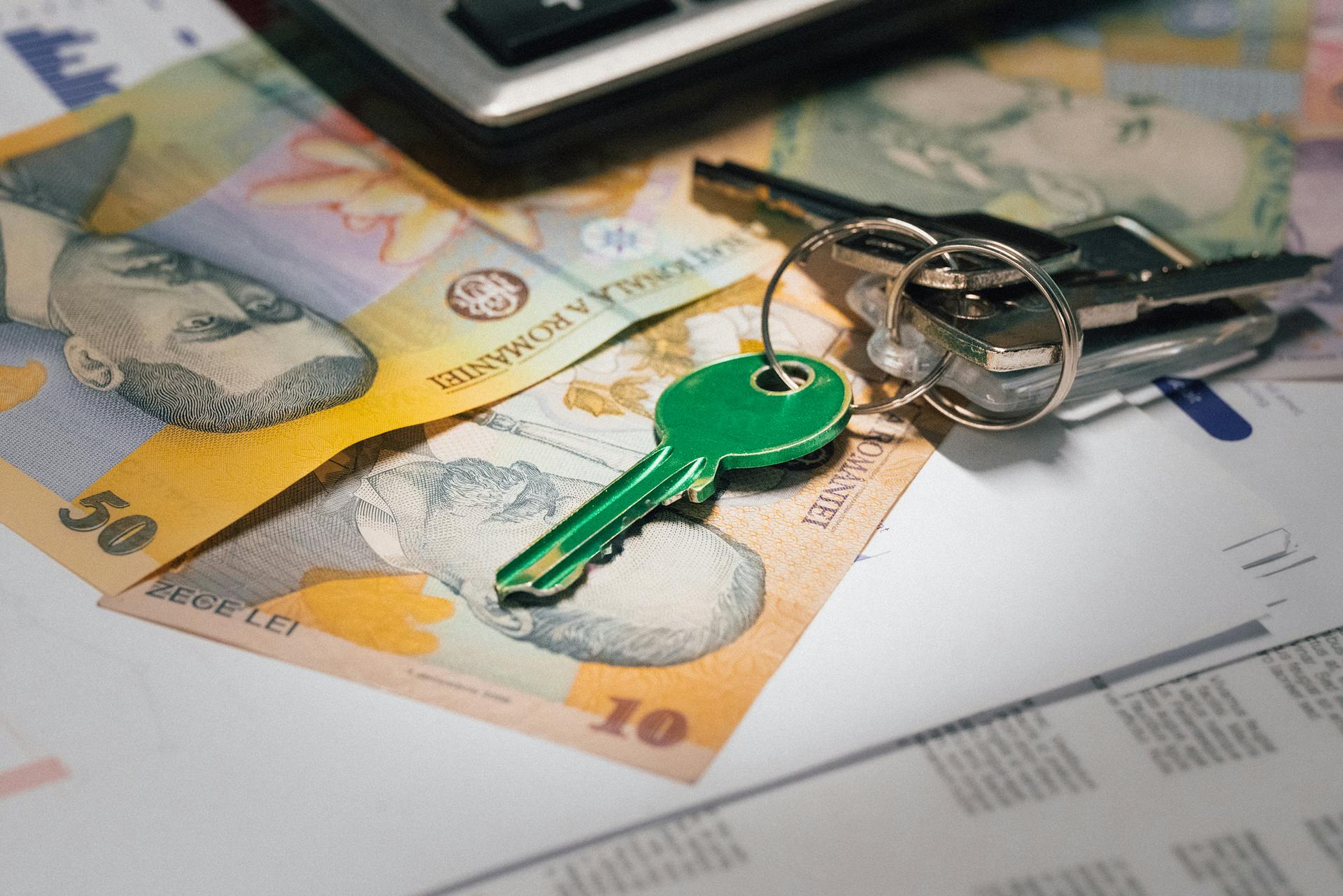
Update interiors to make the property more attractive to potential buyers. This could include installing new flooring, updating lighting fixtures, and painting the walls.
Consider incorporating energy-efficient features to increase the property's value. This can be a major selling point for potential buyers who are looking for ways to reduce their energy costs.
Aim to stick to your budget and avoid telling contractors about any contingency buffer you may have. This will encourage them to stay within budget and avoid costly overruns.
By investing in high-quality improvements, you can attract potential buyers and command a higher selling price. As a general guideline, Invoice Owl suggests that commercial renovation costs per square foot range from $30 to $450 depending on the building type and location.
Property Value Improvement
Improving the value of a property is crucial in commercial real estate flipping. Focus on those improvements that will make the final buyer willing to pay your price, rather than fixing what's not broken.
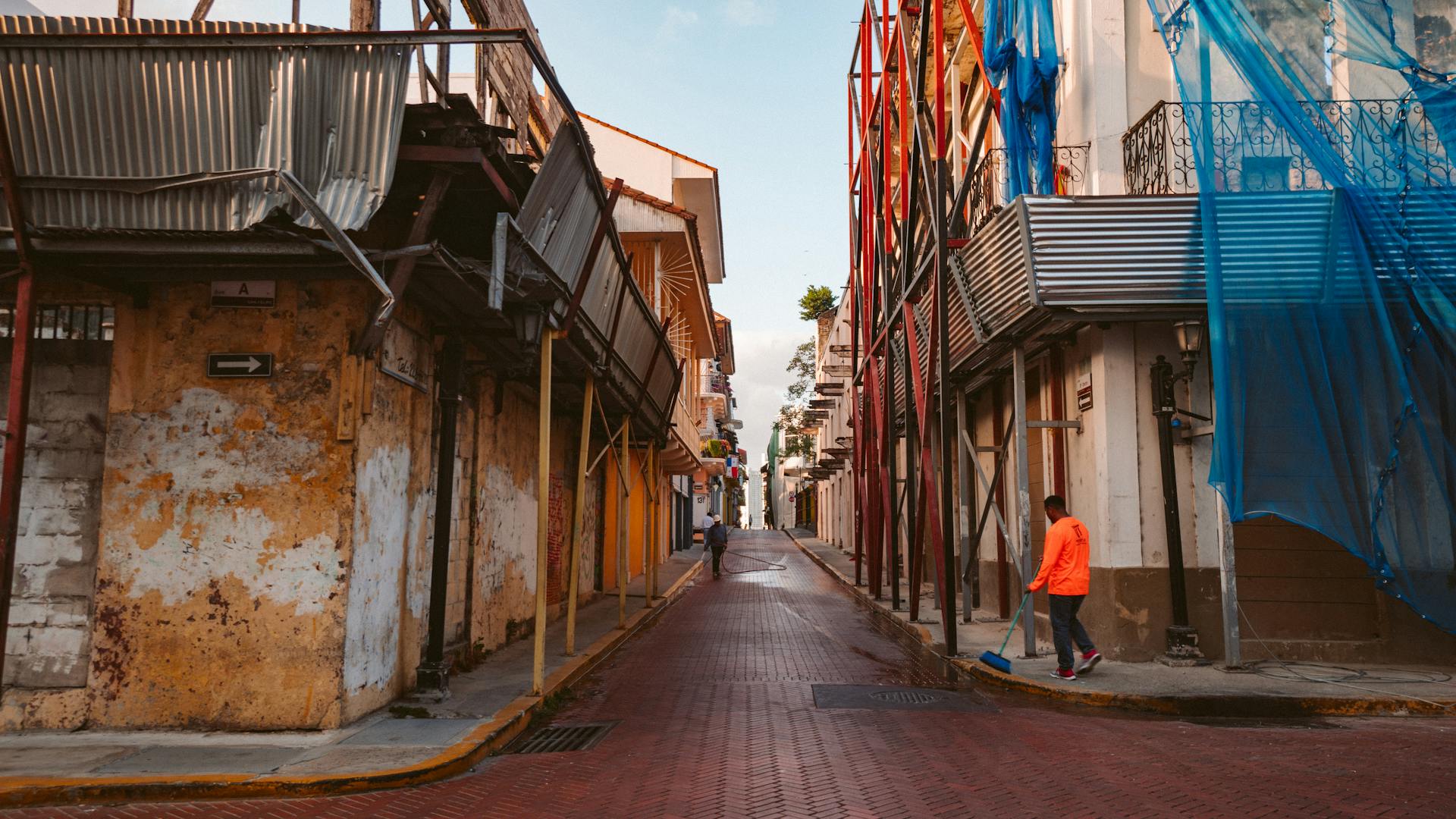
The after-repair value of a commercial property is the worth of the property after all necessary repairs and renovations have been completed. This value can be obtained by considering the market value of comparable properties that currently have the same quality as what this property will be after the renovation.
It's essential to be conservative when deciding on the after-repair value, rather than being over-optimistic. A good approach is to come up with a base case, best case, and worst case scenarios to reflect the uncertainty of your valuation.
Your contractor should keep the comparable property in mind to ensure the repairs and renovations deliver on its projected after-repair value. This is crucial in making or mar the flipping exercise.
In commercial real estate, properties are valued using multiple approaches, with a heavy weight on their cap rates, gross rent multipliers, and cash-on-cash returns.
Calculating Offers and Returns
Calculating offers and returns is a crucial part of flipping commercial property. You should cap your offer price at 70% of the property's after-repair value (ARV) minus the cost of repairs.
The ARV can range from $4,500,000 to $6,000,000 in a Class B CRE in Detroit, with repairs costing $600,000. This means your maximum offer should be $2,900,000.
You can also use the maximum allowable offer (MAO) formula, which is ARV minus fixed costs minus rehab cost minus desired profit. Fixed costs include real estate agent fees, title fees, holding costs, taxes, insurance, and utilities.
Desired profit can be input as an absolute figure or a percentage of the ARV. For example, a 20% profit on the ARV would be $1,200,000.
Cash-on-cash returns are calculated by dividing pre-tax cash flows by invested cash. For example, a property purchased for $1 million with $800,000 debt and $200,000 equity generating $50,000 in cash flow has a 25% cash-on-cash return.
This formula takes into account debt financing, but only considers one year of cash flow.
A fresh viewpoint: Commercial Debt Collectors
Understanding Loans and Risks
Commercial property loans often have shorter terms, typically ranging from 5-20 years, and may come with balloon payments due at the 5- or 10-year mark.
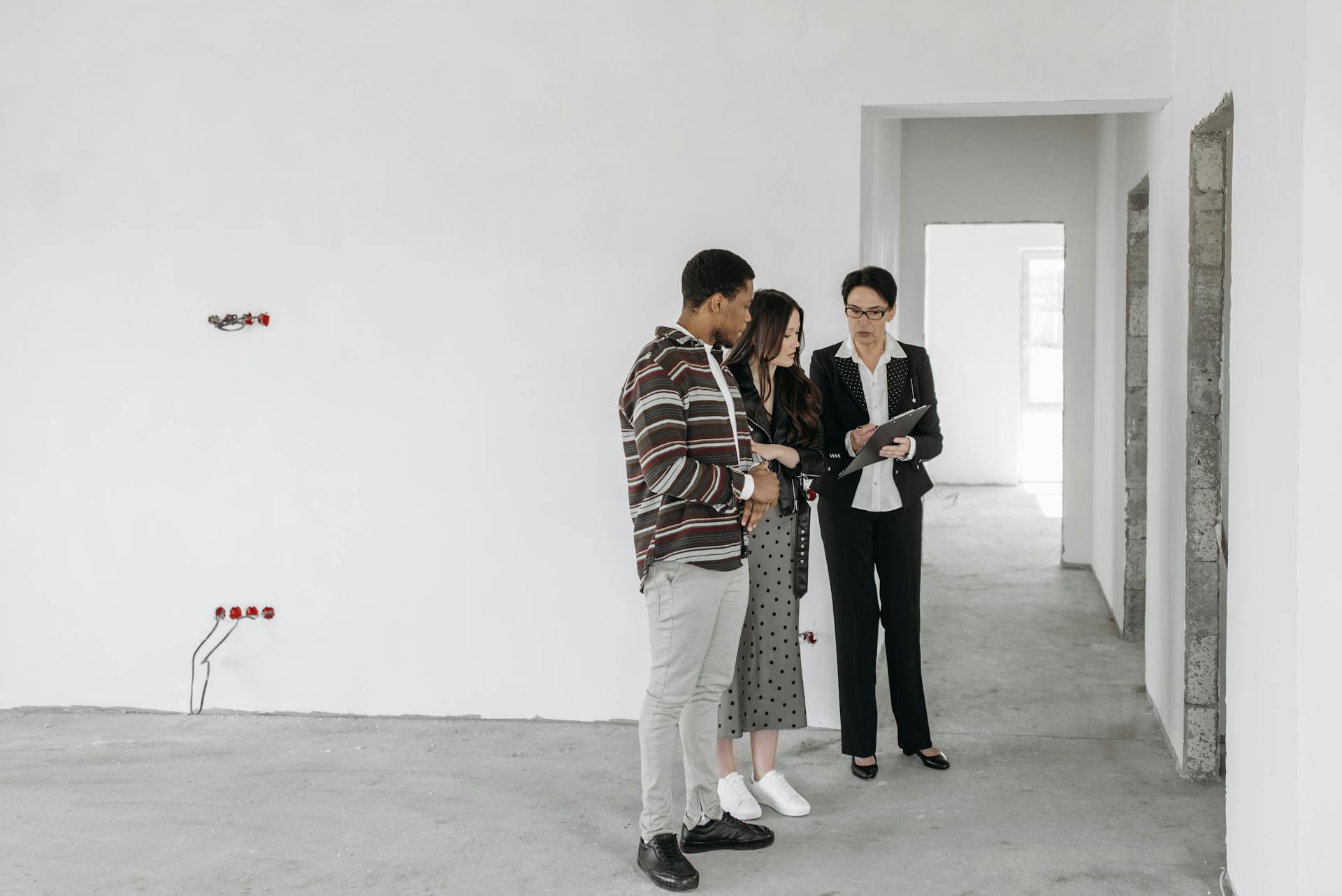
It's essential to have a plan in place for refinancing or dealing with these payments, as the strategy of refinancing can backfire if lending markets tighten.
Hard money loans are a popular choice for property flippers, offering a quick approval process and flexibility that's ideal for swift acquisitions and renovations.
Understand Loan Terms
Commercial property loans often have shorter terms, typically ranging from 5 to 20 years. This means you'll need to refinance the loan when balloon payments come due, usually at the 5- or 10-year mark.
Hard money loans, a popular option for commercial real estate flipping, are known for their quick approval process and flexibility. They're often used for acquiring and renovating commercial properties swiftly.
Commercial property loans can backfire if lending markets tighten, making it essential to understand loan terms and plan accordingly.
Cap Rates
Cap Rates are a key metric in evaluating commercial property investments, calculated by dividing the property's price by its net operating income.

For example, a $1 million property generating $100,000 of annual income has a cap rate of 10 percent.
Cap rates measure investor returns on a debt-free purchase, and tend to be higher for riskier properties.
The type of tenant and their credit rating, lease terms, property condition, and the strength of the local market all influence cap rates.
This means that a property with a strong, creditworthy tenant and a long-term lease may have a lower cap rate than a property with a riskier tenant and a short-term lease.
You might enjoy: Long Term Real Estate Investing
Risks and Challenges
Flipping commercial properties comes with its own set of risks and challenges. Unexpected renovation costs can blow a hole in your budget, making it difficult to recoup your investment.
Market fluctuations can cause property values to drop, leaving you with a loss if you're unable to sell quickly. Longer holding periods can also put a strain on your finances.
Potential delays in finding suitable buyers can leave you with a property that's not generating income, further increasing your financial burden. It's crucial to have contingency plans in place to mitigate these risks.
Carefully evaluating the financial viability and market potential of each project before proceeding is essential to avoid costly mistakes.
Marketing and Sales
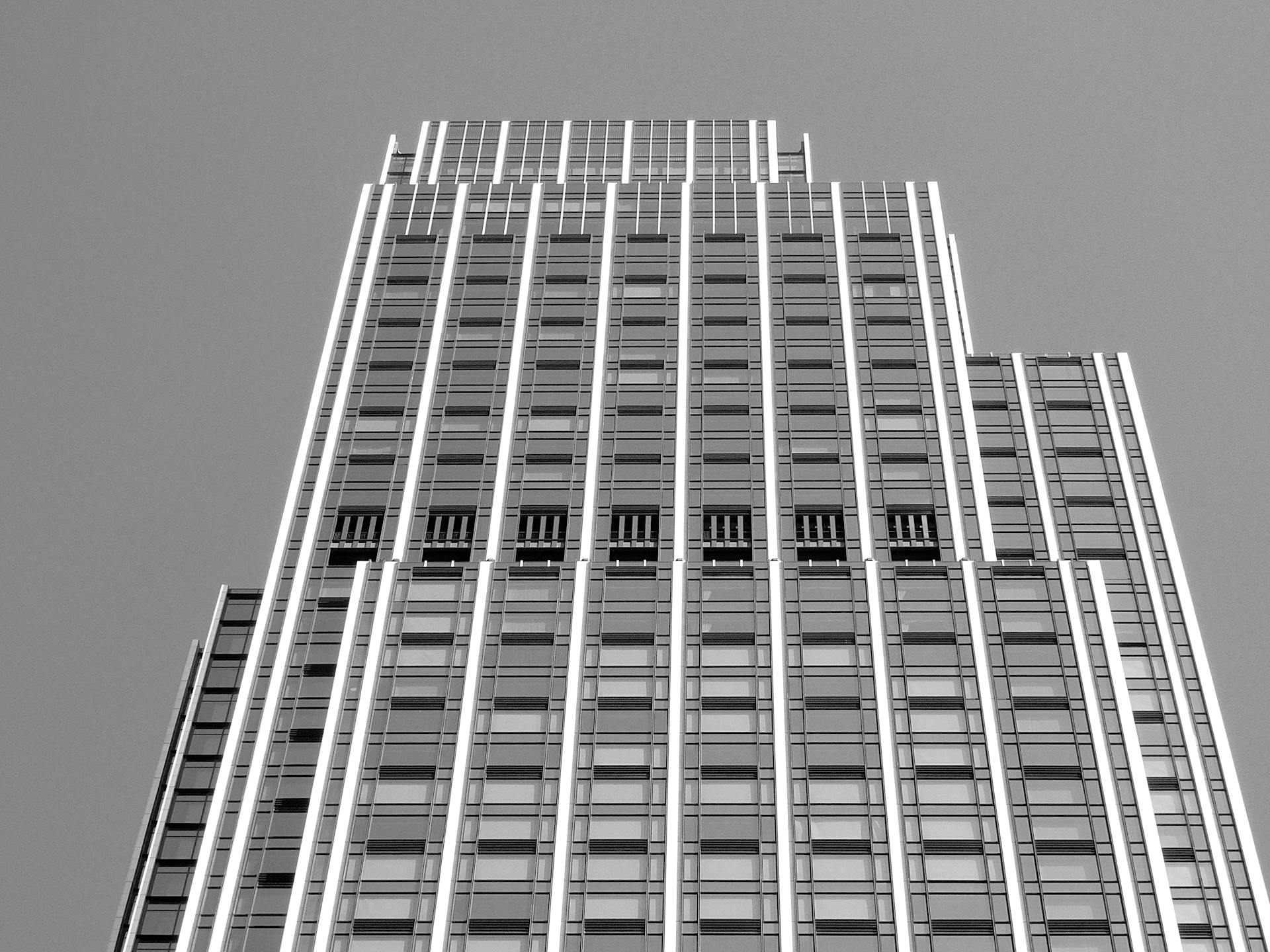
Developing a solid marketing and sales strategy is key to successfully flipping a commercial property. This involves showcasing the property's unique features and emphasizing its potential for a high return on investment.
Professional photography and virtual tours are essential tools in highlighting the property's best features. They help potential buyers visualize the space and imagine its potential.
Partnering with a real estate agent specializing in commercial properties can also increase your chances of finding a suitable buyer quickly.
Marketing and Selling Strategy
Developing a solid marketing and selling strategy is key to successfully flipping a commercial property. Utilize online and offline channels to showcase the property's unique features and highlight its potential for a high return on investment.
Professional photography is essential to capture the property's best features. Virtual tours can also be a powerful tool to give potential buyers a comprehensive view of the property.
Targeted advertising can help attract the right buyers, and partnering with a real estate agent specializing in commercial properties can increase your chances of finding a suitable buyer quickly.
Build Your Network
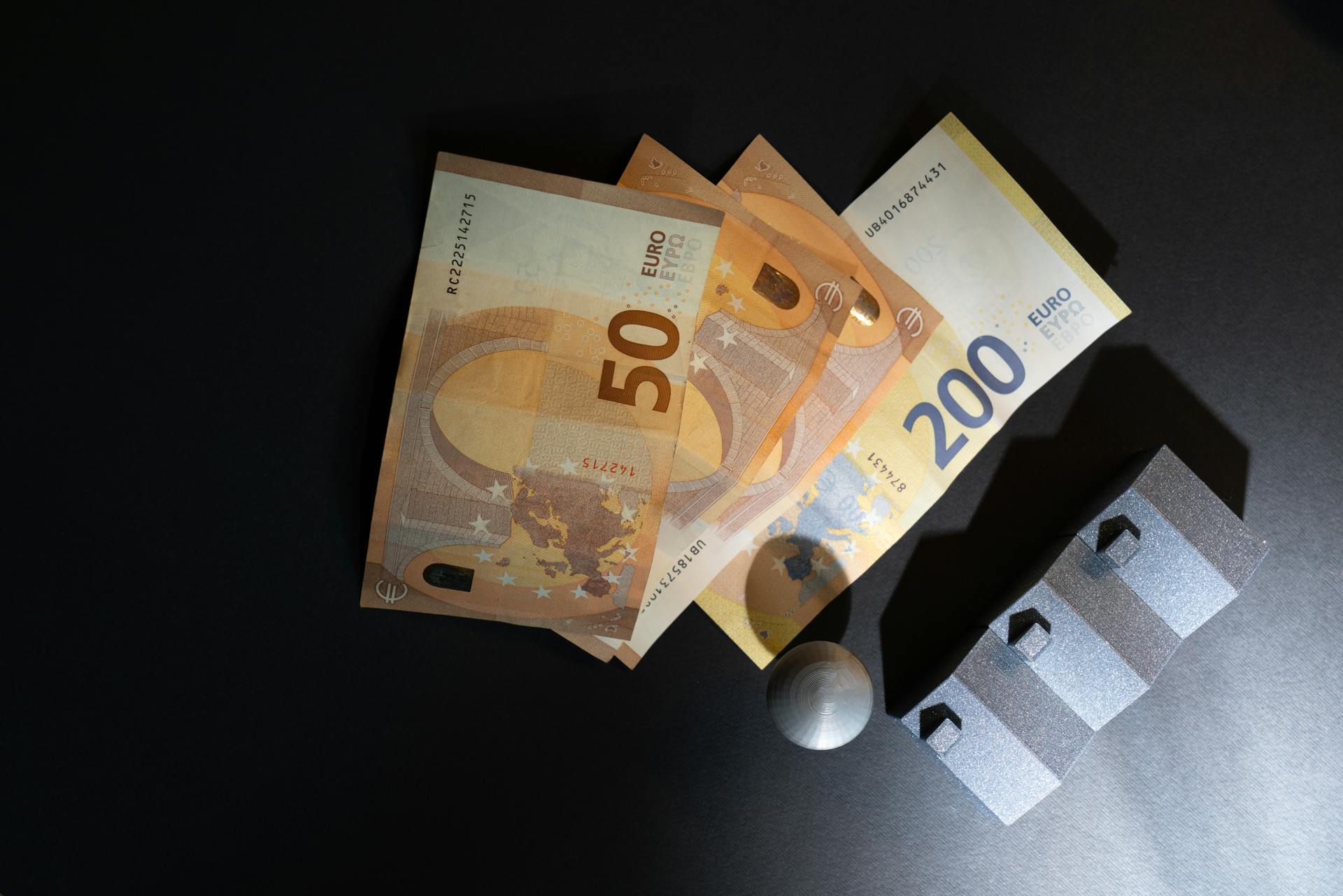
Building your network is crucial for finding bargains in commercial real estate.
Seek out property owners struggling to pay their bills, and build relationships with them. This can lead to potential deals before they're listed.
Real estate attorneys who specialize in distressed commercial properties are a great source of information. They often know about properties before they hit the market.
Banks that own distressed commercial properties are another source of leads. They're often eager to sell and avoid foreclosure costs.
Commercial realtors, brokers, and leasing agents can provide valuable insights into local commercial property markets. They can also help you secure tenants and buyers.
Preparation and Planning
Conducting thorough market research is crucial before diving into the commercial real estate market. This involves analyzing key factors such as property values, vacancy rates, rental demand, and economic indicators.
Understanding local market dynamics is essential to identify potential properties with significant appreciation. For instance, if you're looking to flip properties in Houston, Texas, you need to know how the local market works.
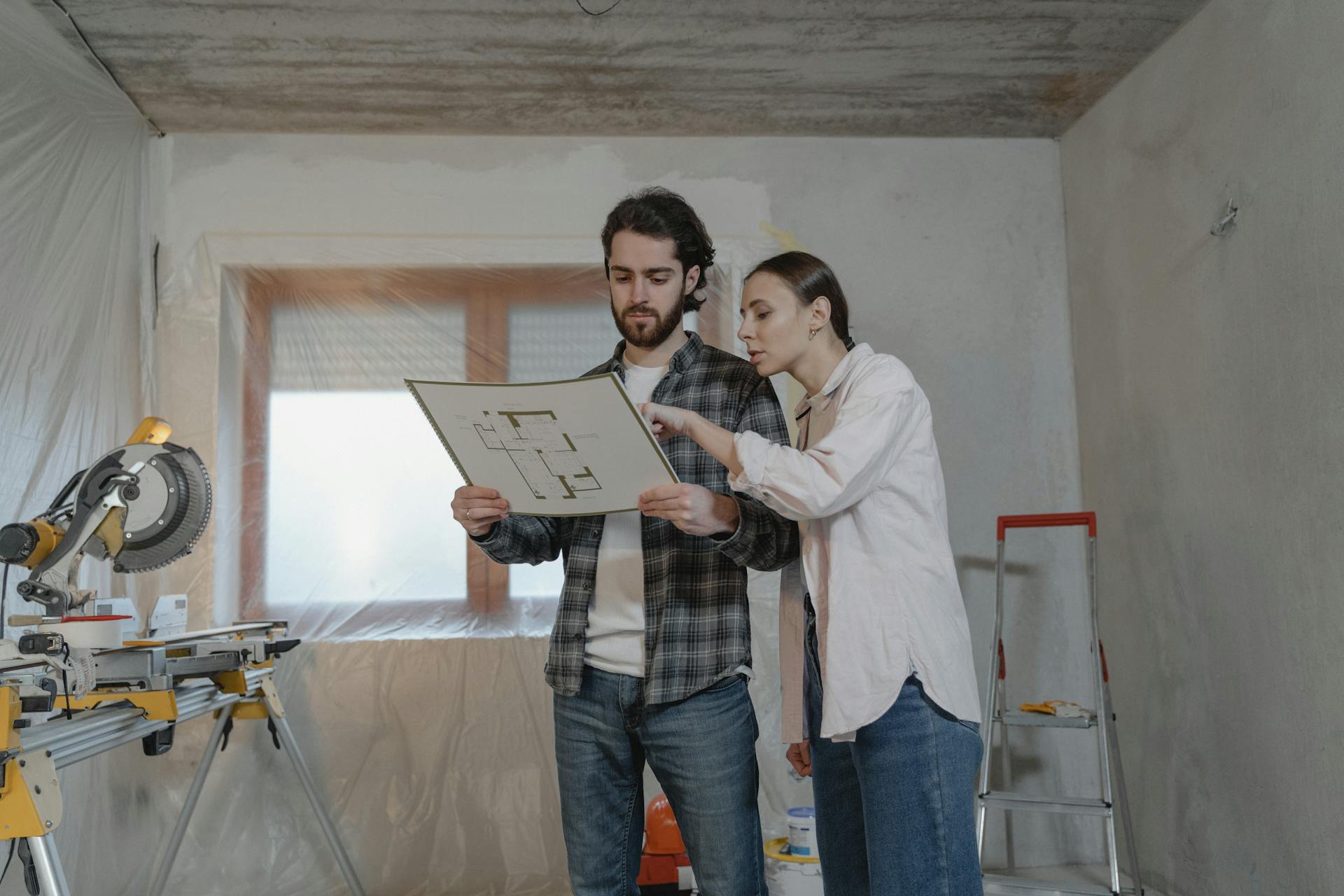
Property values, vacancy rates, and rental demand are all interrelated and can impact your investment. Analyzing these factors will help you make informed decisions.
Economic indicators such as GDP growth and job market trends can also affect the commercial real estate market. It's essential to stay up-to-date on these trends to make smart investment decisions.
By conducting thorough market research, you can identify potential properties that have the potential for significant appreciation. This will help you make a profit when you decide to sell.
Frequently Asked Questions
Is flipping commercial real estate profitable?
Flipping commercial real estate can be a profitable venture, but it requires careful planning and knowledge of the market. With the right approach, it can yield significant returns, making it a worthwhile investment opportunity.
What is the biggest problem in commercial real estate?
The biggest problem in commercial real estate is adapting to a rapidly changing economic climate and shifting consumer needs, which can make it challenging to find and retain tenants. This requires commercial property owners and investors to stay ahead of the curve and anticipate emerging trends.
What are the red flags for illegal property flipping?
Red flags for illegal property flipping include a mismatch between the title and purchase agreement, and the use of strawbuyers
Sources
- https://www.duckfund.com/blogs-re/how-to-flip-commercial-real-estate
- https://www.socotracapital.com/blog/six-tips-flipping-commercial-real-estate
- https://spacecoastdaily.com/2024/05/top-challenges-in-flipping-commercial-real-estate-and-how-to-avoid-them/
- https://www.cbicommercial.com/blog/best-practices-when-flipping-commercial-real-estate
- https://gllholdings.com/essential-tips-flipping-commercial-real-estate/
Featured Images: pexels.com
